SOUL (2020)
After landing the gig of a lifetime, a New York jazz pianist suddenly finds himself trapped in a strange land between Earth and the afterlife.
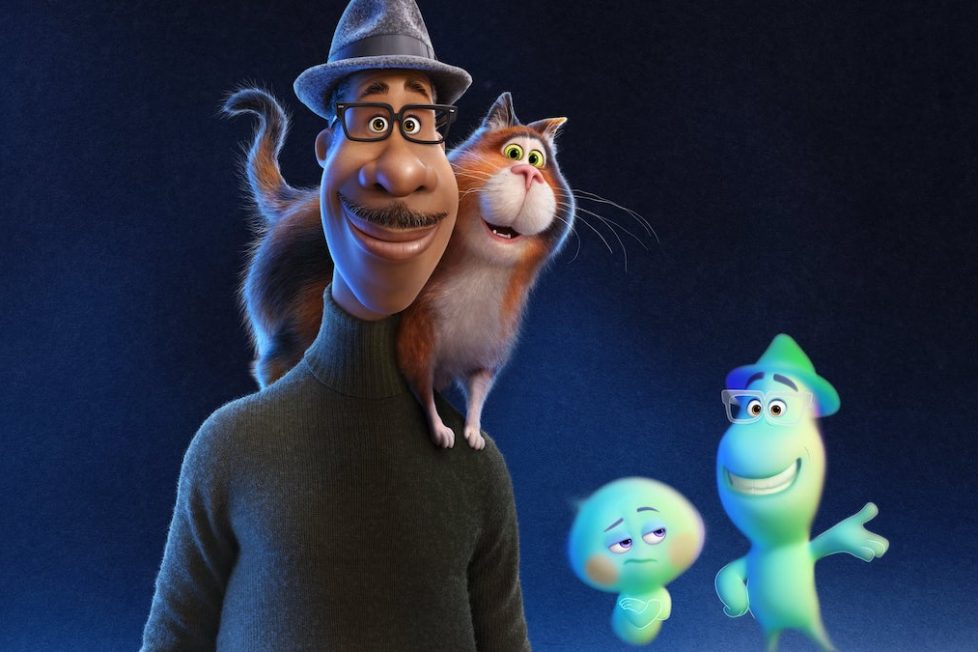
After landing the gig of a lifetime, a New York jazz pianist suddenly finds himself trapped in a strange land between Earth and the afterlife.


Pixar haven’t made a bad film and Soul doesn’t change my opinion. It may not be their best, but there are plenty of laugh-out-loud moments, it’s emotionally engaging and ultimately life-affirming, so I’m not complaining. After all, tackling basic existentialism for children whilst keeping things light and entertaining is quite an achievement! And probably why former President Barack Obama included it among his 14 favourite films of 2020. Like all of Pixar’s output, it’s fine family viewing and engaging enough to keep the grown-ups entertained too.
Writer-director Pete Docter brought us Monsters, Inc. (2001), Up (2009), and Inside Out (2015), so if you liked any of those, then Soul will satisfy. It revisits familiar themes of identity, self-doubt, and becoming aware of one’s own mortality, with some pop psychology thrown in. It’s great material to help parents enter into meaningful, if potentially ‘heavy’ discussions with their kids and, maybe, even give a few adults food for thought.
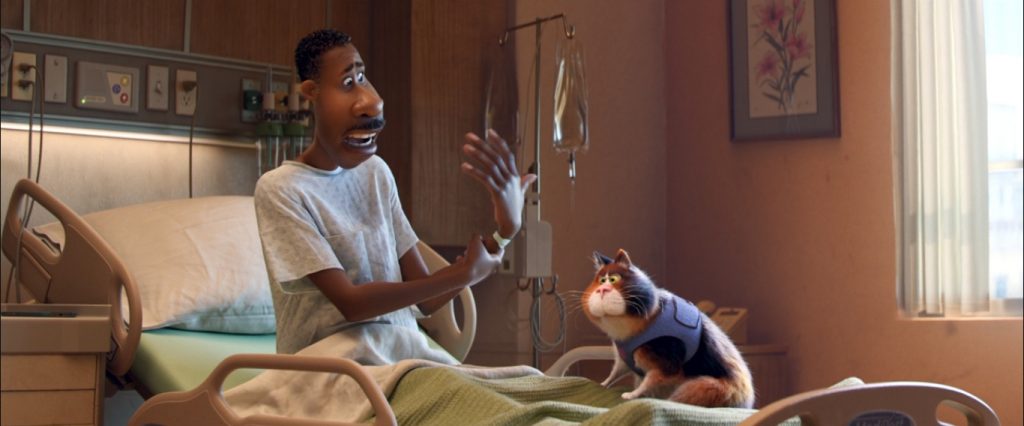
Docter isn’t solely referencing his own prior output and I’m never sure about children’s films that borrow so heavily from classic movies. Are those elements peppered through as homages to impress grown-ups and tap into a fuzzy sense of nostalgia? Or are they just hoping they’ll get away with it, because youngsters won’t recognise a pastiche when they see one? Perhaps this wouldn’t be a sticking point at all had the promotional preamble not made so much of how original Soul was!
Soul is jam-packed with elements taken from other films. Some are certainly meant to be recognised, while others were unavoidable given the well-trodden themes. The ‘escalator to the stars’ is clearly evoking A Matter of Life and Death (1946), which is undoubtedly a deliberate homage because the premise is the same: a soul, that should be on its way to Heaven, falls back to Earth and a spirit is dispatched to the mortal realm to remedy this imbalance…
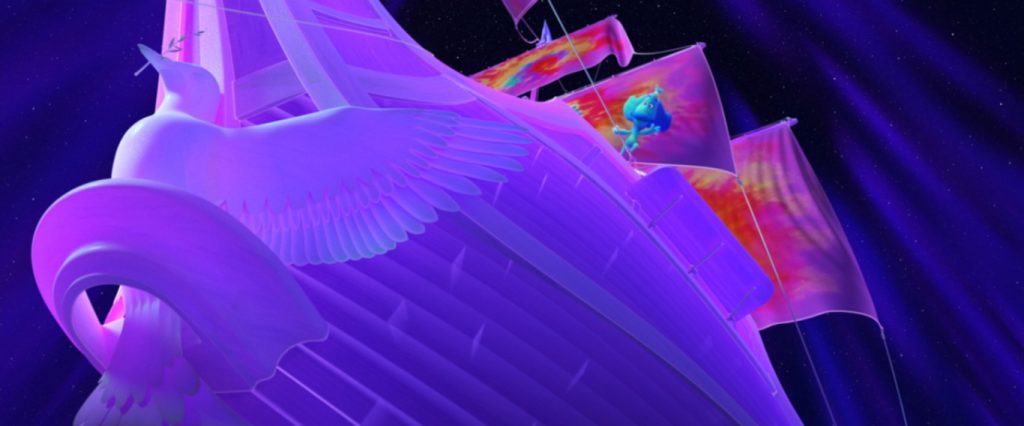
Joe Gardner (Jamie Foxx) is a music teacher who’s dreamed of becoming a famous jazz pianist. On the day the school offer him a full-time contract, he also gets his big break with a chance to play in the Dorothea Williams (Angela Basset) Quartet. He’s so excited by the news he doesn’t pay attention to the world around him… so, one moment he’s happy, the next he’s dead. But, on his way up the heavenly escalator towards the light, he rebels against this unfair fate and tries to run back down to Earth.
This sequence presents one of the darker details in the film that relates to our reality. The making of Soul was beset with the problems of continuing production during the COVID-19 pandemic. The end credits even contain a comment about how the animators worked from home. The national suffering of America would’ve been constantly on their minds! So, Joe finds himself alone on his ascent to ‘The Great Beyond’, but when he turns to run back against the flow, he’s confronted by a swell of innumerable souls coming up behind him. A whole lot of people seem to be suddenly dying back on earth, no…?
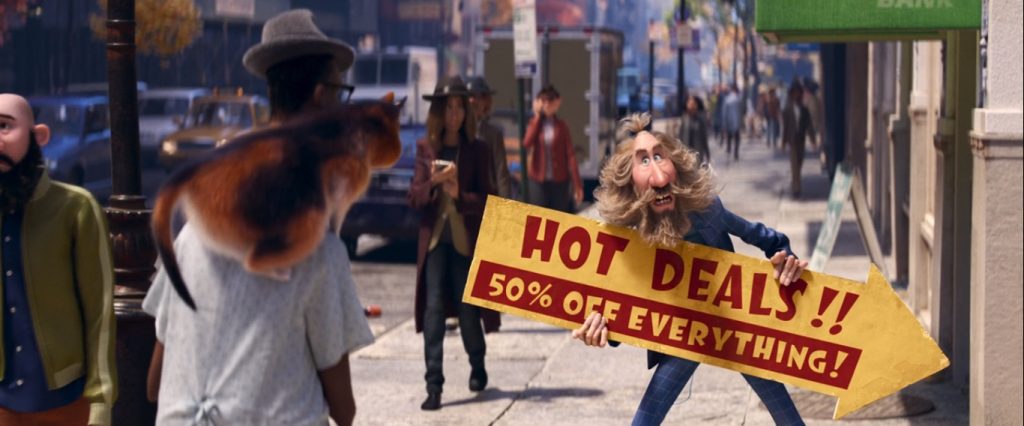
It’s impossible for Joe to fight against this tide of the departed so he takes a leap into the void… falling down through darkness and into a fluffy place of light we learn is ‘The Great Before’, where unborn souls are prepped for their life on Earth. It turns out that some souls of the dead are sent to this place to act as mentors in the ‘You-Seminar’, where the unborn compile their personalities and search for their individual ‘spark’. Pretty much like the young foals in My Little Pony: Friendship is Magic (2010-2020), only instead of earning a ‘cutie-mark’ the spark completes their ‘Earth-pass’ so they can be born into the world.
It looks like at least one of the writing team must’ve been a ‘Brony’ because that’s not the only noticeable nod to My Little Pony! Later, Joe has to overcome his fear and literally enter the scary darkness of doubt that has become a big ‘monster’. Venturing deep into the heart of the darkness, he finds a vulnerable, scared lost soul within. It’s the magic of friendship and love that brings the soul back into light, the dark monster disintegrating to dust. The scene is almost, beat-for-beat, a re-enactment of Twilight Sparkle resolutely pushing her way inside the Pony of Shadow to seek the small and hurting Stygian deep inside, from season 7’s Shadow Play (2017).
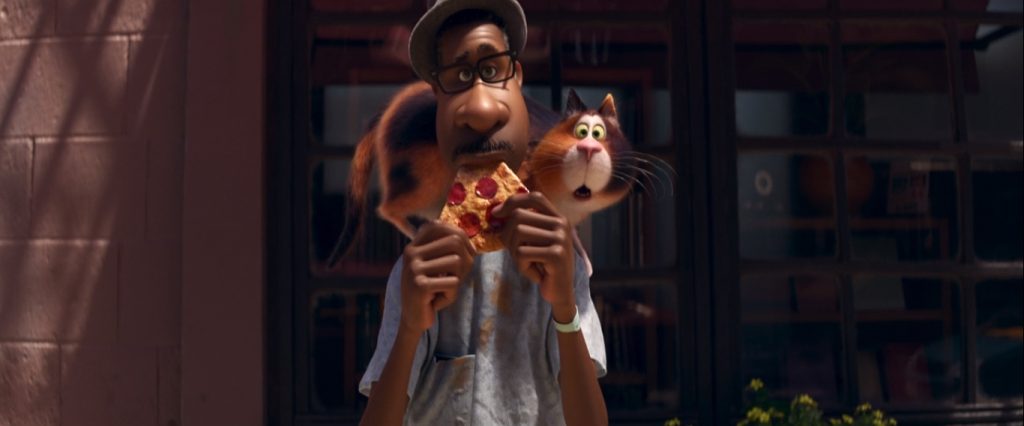
In their unborn state, souls in The Great Before are soft amorphous white spheres, little more than faces with embryonic limbs. All except Joe, who still has his hat and glasses, retaining his ‘Residual Self Image’, as Neo does in The Matrix (1999). He’s quickly mistaken for one of the mentors and assigned to aid troubled soul number 22 (Tina Fey) find her spark. This isn’t an easy task as many have tried and failed before him, and there’s a great montage of 22 trying the patience of a succession of famous historical personages—including Abraham Lincoln, Mahatma Gandhi, Marie Antoinette (she’s just a disembodied head, of course), Muhammed Ali, Carl Jung, and Mother Teresa…
Apparently, the idea for Soul popped into Docter’s head when he first set eyes on his newborn son. It seemed clear to him that his baby already had a personality ‘installed’ and it made him wonder how that could be. Where did it come from? The original treatment had the film take place entirely within The Great Before but, thankfully, once the final screenplay was workshopped with co-writers Kemp Powers and Mike Jones, they realised the story needed a connection to the real world. The core of the narrative developed into the story of how a soul that doesn’t want to die, meets a soul that’s afraid to live and how they change each other.
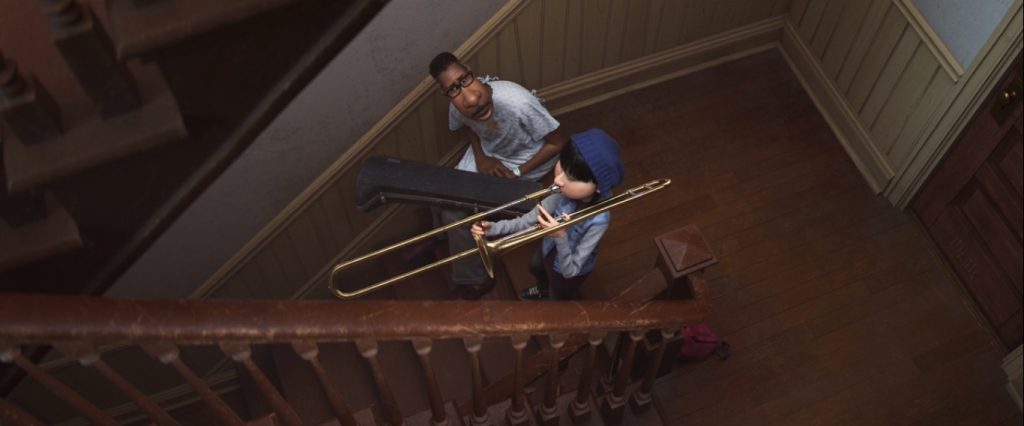
Joe and soul 22 are all too familiar and Pixar-esque. It seems 22 had stolen the face mapping off Dory, from Finding Nemo (2003). and dead Joe looks to have borrowed his avatar from Olaf the snowman from Frozen (2013). The kindly ‘Soul Counsellors’ (ethereal beings who oversee the proceeding) are something a bit different for Pixar, though. They were constructed from a single fluid line of light that could curve and change shape. Their appeal is delightfully retro, inspired by the single line figure drawings of Bauhaus artist Paul Klee.
The visualisation of the landscape of The Great Before is so clean and soft, it looks far too much like a toilet paper commercial! I was so glad when we returned to the real world which is breathtakingly beautiful, rendered with amazing attention to detail. I won’t give too much away here, but it turns out that Joe and 22 somehow manage to get to the living world but are mixed up along the way.

Soul 22 is now in Joe’s body, and Joe is in the body of a fat therapy cat. Hilarity ensues as Joe, in feline form attempts to give 22 a crash course in being an adult human. They need to get his body to the make-or-break jazz gig in time for a soul swap. This exchange will be conducted by Moonwind (Graham Norton), a psychedelic pirate they’d met in The Great Before while the hippy human host was having an out of body experience!
Yes, at heart, Soul is another in a long tradition of body-swap comedies, but a superior example of the sub-genre. It borrows from a few of its predecessors: All of Me (1984), which also had a mystic capable of transferring souls and a blunder that mixes two together; Freaky Friday (2003), in which a mother and daughter swap bodies and sort each other’s lives out; and, most conspicuously, Nine Lives (2016), in which the soul of a man in coma transfers into the body of his daughter’s cat. There are plenty of other examples, perhaps the earliest being Vice Versa (1916), with later remakes produced in 1937, 1948, and 1988!
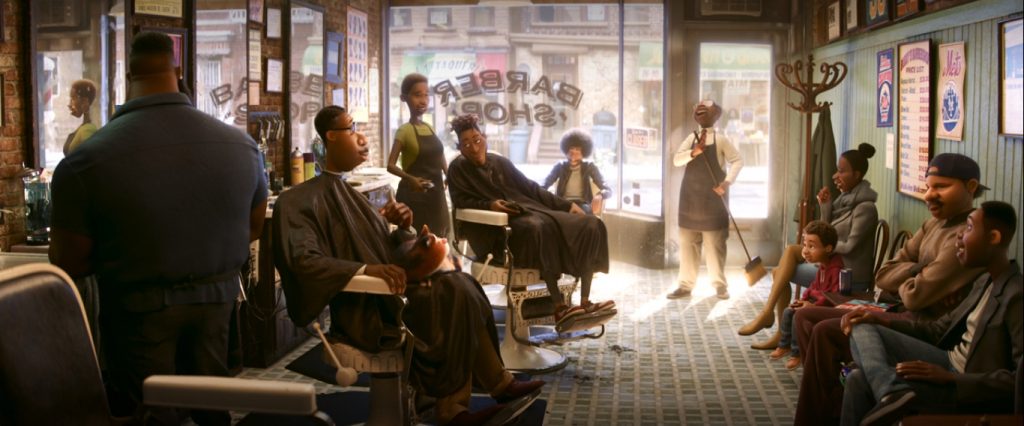
Being made in a year the Black Lives Matter movement was at its peak brought home the fact this was the first Pixar film to star an Afro-American as the lead! For some of its grown-up viewers, this became the main point of entry and fuelled further discussion.
Surely, anyone who isn’t a racist would think a black lead is a good thing, or simply remain ambivalent? Nevertheless, the script has drawn some criticism for having the black character morph into a white Casper-clone, guided by a ‘white saviour’ blob. I can see the point, especially when the voice actress in this case is Tina Fey, who’d been in the news for using ‘blackface’ as a comedy element in the popular TV series 30 Rock.
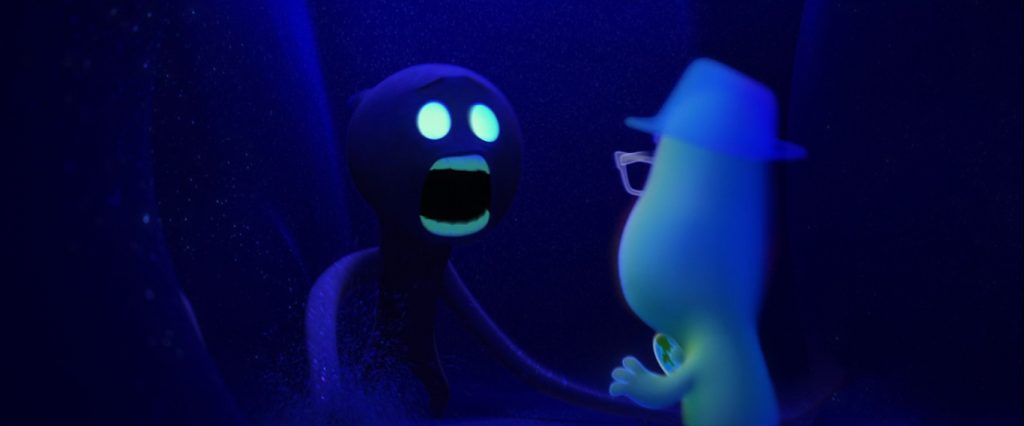
But this isn’t the sort of debate that’ll concern its target audience of kids, and older viewers would have to be interested enough to go into the making and casting of the film to get too hung-up on such things. There’s a little joke in there when spirit-Joe asks soul 22 why she sounds like a middle-aged white woman, and she explains she chose that voice because it annoys everyone… besides, Fey is a talented vocal actress and understands comic timing, not to mention an accomplished comedy writer herself. She created the cult comedy Mean Girls (2004) and was allowed to sharpen her character’s dialogue in Soul.
The writing team, already one third black, brought in a variety of voices to ensure the representation of the black experience was as real as possible within the context of the story. Among them were legendary music producer Quincy Jones, writer-director Ryan Coogler (Black Panther). Peabody Award recipient Kenya Barris, world renowned cellist Yo-Yo Ma, not to mention those directly involved with making Soul—such as Grammy and Tony award-winning singer and voice actor Daveed Diggs (Hamilton), pianist John Batiste, and Jamie Foxx in the lead role.
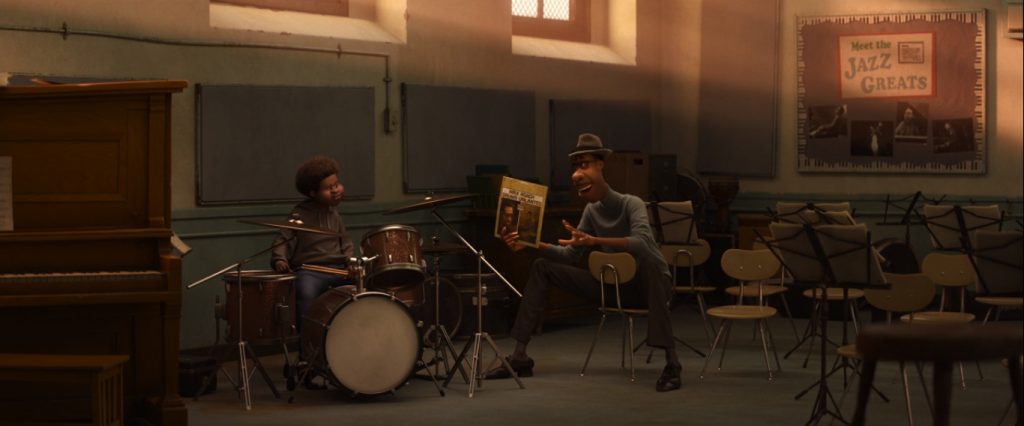
Apart from the amazing artistry of the animation for the real world, what sells Soul and deepens its emotional core is the soundtrack. For a film called Soul about jazz, this should come as no surprise, especially with such an impressive set of contributors. The score was provided by Trent Reznor and Atticus Ross, of Nine Inch Nails, who’ve both been working on film soundtracks for a couple of decades. They’ve earned plenty of prestigious awards, including an Academy Award for The Social Network (2010), the first in a string of movie soundtracks for David Fincher, including his recent biopic Mank (2020). For Soul, they composed ambient music to evoke a suitably metaphysical mood, but for the jazz interludes they deferred to John Batiste for authenticity, without sacrificing accessibility.
The scenes where Joe gets carried away and is transported to ‘the zone’ through his music are suitably jaw-dropping. The musical performances alone make the film a rewarding watch and even if jazz isn’t your thing, chances are you’ll warm to it before the movie’s over.
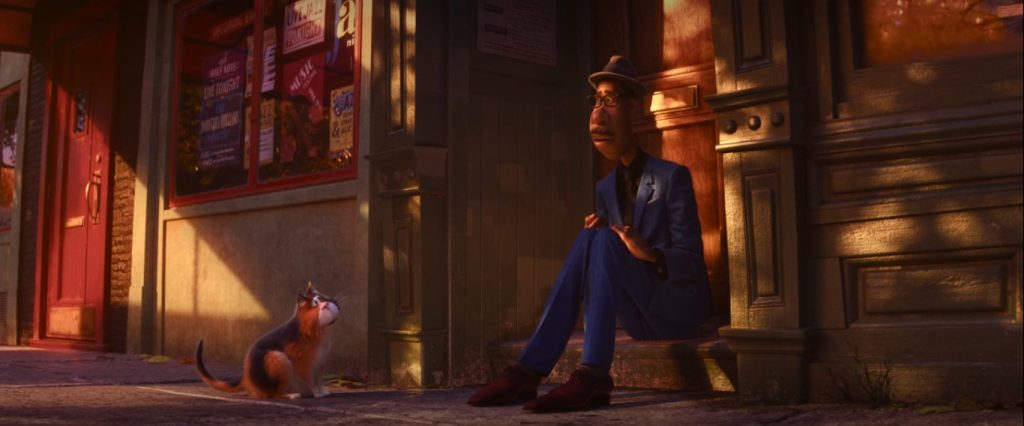
Soul is built around a handful of highly emotive key scenes which showcase the expected Pixar range from zany, through poetic, to poignant. Whilst 22 is piloting Joe’s body ‘she’ manages to show him his oversights and obsessions. In turn, she starts to appreciate how wonderful life is, even when it’s hard. Look out for the sensitively crafted stand-out scene set in a barber shop, and another when Joe/22 heals a rift between mother and son by simply being honest.
It advocates a less goal-driven and more experiential way of life. You don’t have to do anything world-changing! You don’t have to find your special talent and be the best at something! It’s enough to just be honest about who you are. But you do have a duty to enjoy moments of beauty as you find them, even if they seem rare—like a favourite flavour, or the dappled sun through leaves. You’ve been given senses to explore and experience the world and have the capacity for wonder and joy. Your only responsibility is to not squander those gifts and, if you can inspire another person to enjoy simple yet unremarkable moments, then your soul has been enriched too.
USA | 2020 | 100 MINUTES | 2.39:1 | COLOUR | ENGLISH

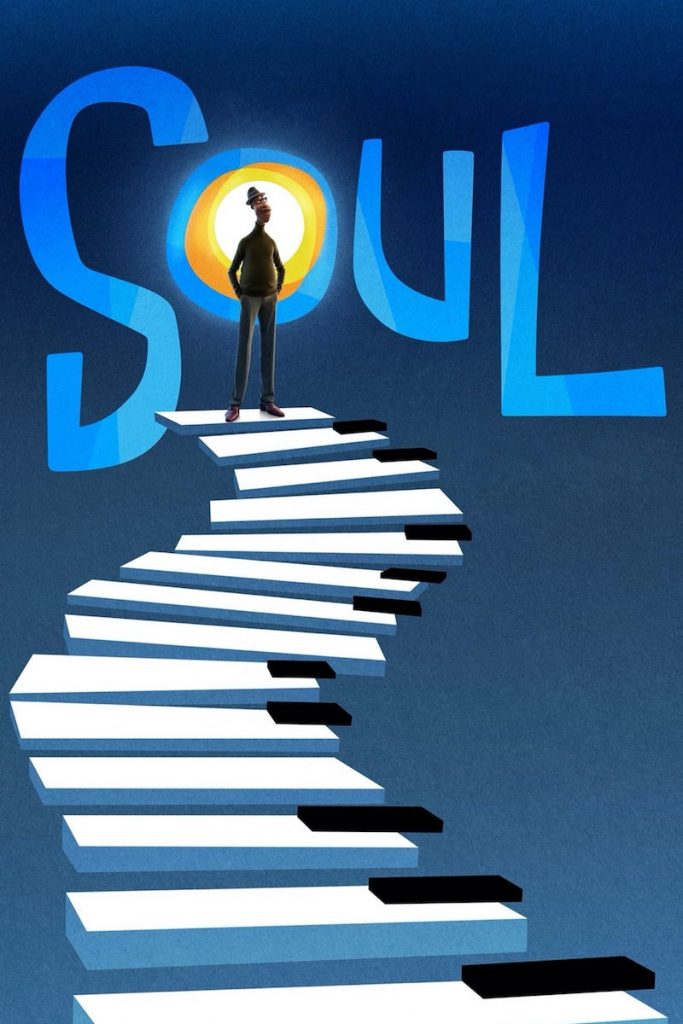
director: Pete Docter.
writers: Pete Docter, Mike Jones & Kemp Powers.
voices: Jamie Foxx, Tina Fey, Graham Norton, Alice Braga, Richard Ayoade, Phylicia Rashad, Donnell Rawlings, Questlove & Angela Bassett.
